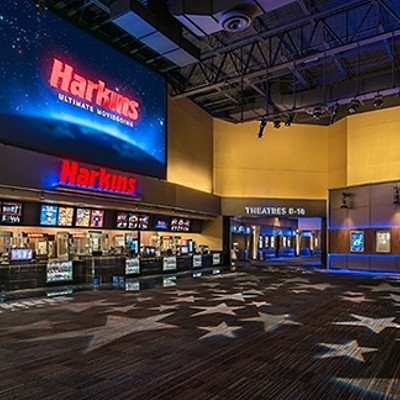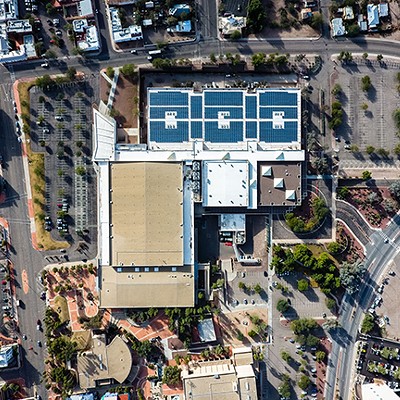The ranch, then known as Bellota and now called A-7, was an 82,000-acre spread for sale to a party that wanted to subdivide and develop the land. That possibility alarmed local environmental groups, who approached then-Mayor George Miller for help.
Even after the proposed sale fell through, Miller worked with the Arizona chapter of The Nature Conservancy to push the council to purchase part of the ranch.
One frustrated local resident pointed out that the asphalt in front of his home was crumbling and city crews didn't even show up to fix it. But the council, he said, wanted to go way outside the city limits and spend millions of dollars for land he may not even be able to visit.
City Manager Luis Gutierrez argued the acquisition would advance the local government's goal of "purchasing potentially developable property for preservation of open space and maintenance of public access."
The council, on a 4-3 vote, followed his advice in November 1998 and the city bought 6,828 acres of land and grazing rights to another 34,200 acres.
Before the final vote, council members who supported the purchase were expressing concerns about how soon the city could sell their ranch land. Gutierrez and a representative of The Nature Conservancy both said it should be about two years until the county, state, or federal government bought the site and reimbursed the City.
Now, three-and-a-half years later, the city still owns the property. It has a self-imposed limit of 100 head of cattle on the A-7, and spends about $150,000 annually of general fund tax money to run the ranch.
Overseeing the operation is John Updike, project manager for the city's Rio Nuevo downtown revitalization effort. From his ninth-floor City Hall office he admits with a laugh that in addition to his other duties, "I'm in the cattle business."
Updike says the county never expressed interest in the property and discussions with the U.S. Forest Service about buying a portion of it didn't go well. "They want all the buildings removed from the land, including some potentially historic ones, and kept throwing other roadblocks in front of me," he says.
Based on that, and the recent expression of interest by "the brokerage community representing environmentally responsible ranchers in Southeastern Arizona," according to a March 22 memorandum from City Manager James Keene, the city is now having an appraisal of the ranch prepared. That report will look at the value of the land if the 100 head of cattle limitation is preserved, or if it is allowed to rise to 686. In addition, development restrictions and conservation easements will be included as part of the deal.
Once the appraisal is completed, the issue will go to City Council, probably next month. They will be asked to decide how many cattle to allow on the land and to approve putting the property up for sale.
Despite the expenditure of more than $500,000 in local tax money on operating costs and the potential loss of some of the city's original investment, former council member Jerry Anderson still thinks the ranch purchase was a good idea. "The council took the opportunity and made the right decision," he says. "Hopefully the new owner will manage it in an intelligent way."
From the beginning, Anderson was the primary advocate for the ccity disposing of the ranch quickly. So how does he feel about it taking this long? Expressing understanding for the delay, he says, "The proposal was, 'Let's try for two years.' But we realized it could take longer than that. You can shoot at a target, but sometimes you miss."
Andy Laurenzi of The Nature Conservancy said the city in the past has indicated that before the ranch was sold, conservation easements would be placed on the property to prevent its subdivision. "That's the main problem," he says, "wildcat subdivisions."
About keeping cattle on the A-7, Laurenzi adds that his organization has "always been comfortable that it is a working ranch."
But Martin Taylor, conservation biologist at the Center for Biological Diversity, is worried about the strength of the proposed conservation easements and critical of the city allowing any cattle grazing to continue on the property. "With cows," he says, "the fewer there are, the better it is for the environment. Less is better, but there is no minimum level that doesn't do damage to the land."
Taylor is also disappointed the ranch will be put up for sale. "I always felt the city should hang on to it to prevent sprawl," he says. "It's inappropriate to sell. The ranch should be turned into public space."
Updike hopes the sale can be completed soon. He thinks that by allowing the higher number of cattle, the city should be able to get all of its $2.5 million back. Then, given the city's tight financial situation, while displaying a A-7 branding iron he adds optimistically, "It would be super if we could sell it before the end of the fiscal year on June 30."












